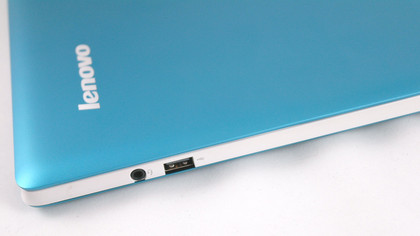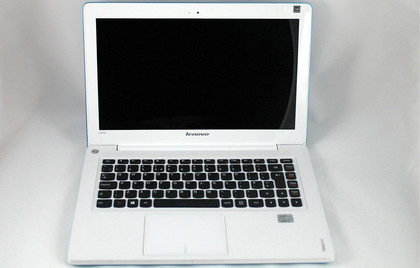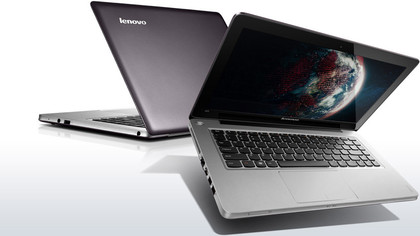Why you can trust TechRadar
The Lenovo IdeaPad U310 isn't really aimed at power users, so it's hardly surprising not to find high-end components inside it. Ultrabooks are fairly homogenous when it comes to the guts, and the U310 is no different - there's nothing like the surprise discrete GPU of its brother, the Lenovo U410.
The Intel Core i3-3217U features in various other lower-end machines, including the oversized Ultrabook Asus S56CA, and the touch-friendly Asus VivoBook S200. It's a dual-core chip, though it's Hyper-Threaded, giving it four virtual cores for some uses.
It runs at 1.8GHz, which is actually slightly faster than the 1.7GHz Core i5-3317U in the higher-end version of the Lenovo U310. However, the i3-3217U used here can't use Intel's Turbo Boost to overclock itself, which the more expensive chip can.

Put simply, this is the lightweight contender of Ultrabook chips, but that should be fine - as we always say, Ultrabooks aren't designed for animating the next Pixar film on. They're for doing general computing tasks quickly and conveniently, and the processor should offer plenty of juice for that.
It's a similar story for gaming. The Ivy Bridge Core i3 processor comes with Intel's integrated HD 4000 graphics, which are much improved over what Intel offered in the past, but aren't really up to what a dedicated graphics chip can produce.
Basically, for casual gaming, and lighter or older 3D gaming, it's fine. Portal 2 will run on it, for example. But if you're into new flashy games, you shouldn't be looking at a low-end Ultrabook.

One thing that will keep the Lenovo IdeaPad U310 from matching higher-end Ultrabooks for speed is the hard drive. There's a fast solid-state drive for Windows, so that it comes on quickly when you boot or bring the laptop awake from sleep. In this, it works fine - press the button to wake it up and it's near-instant.
The speed trade-off comes because Windows is pretty much the only thing the SSD stores - all your files are kept on a regular hard drive. The advantage of this is that it means you get more storage for your money, because hard drives are cheaper than SSDs - 512GB of SSD storage would easily double the cost of this machine.
But it means that snappy operation often goes out the window when you need to dig around for a file, or open something like iTunes, which collects thousands of files together for you. For storing lots of media, though, a larger drive is always handy.

The 4GB of RAM should be plenty for keeping lighter applications as fast as possible, but again isn't what pros tend to look for. For your average user, it should be plenty, though.
The 13.3-inch screen has a resolution of 1366 x 768, which is normal for Ultrabooks in this price range. The Asus Zenbook Prime UX31A boasts a crisp 1080p screen, but it also boasts a four-figure price tag, so what we've got here seems reasonable.
As far as connectivity goes, you're also looking at a pretty typical list. The two USB 3.0 ports are good (lots of rivals at this price only offer one), as is the built-in SD card reader.
Wi-Fi 802.11b/g/n is also as expected, though the inclusion of Bluetooth 4.0, so it'll work with Bluetooth Low Energy devices, is good to see.

